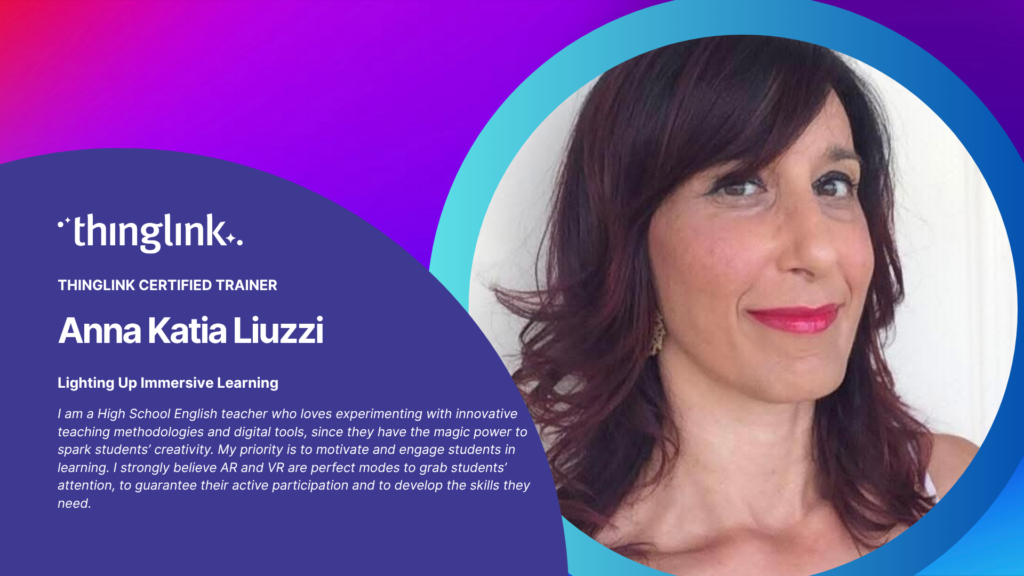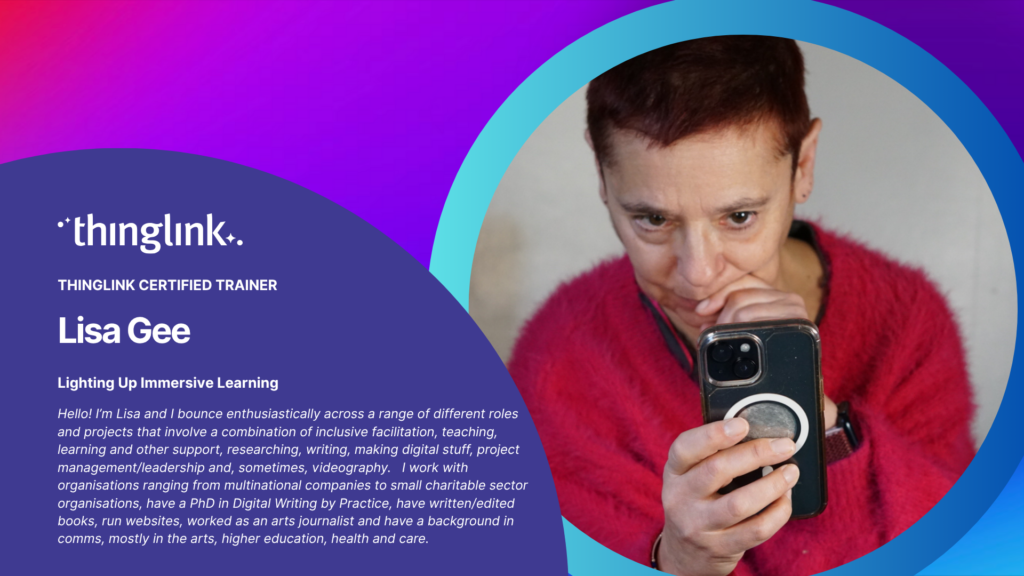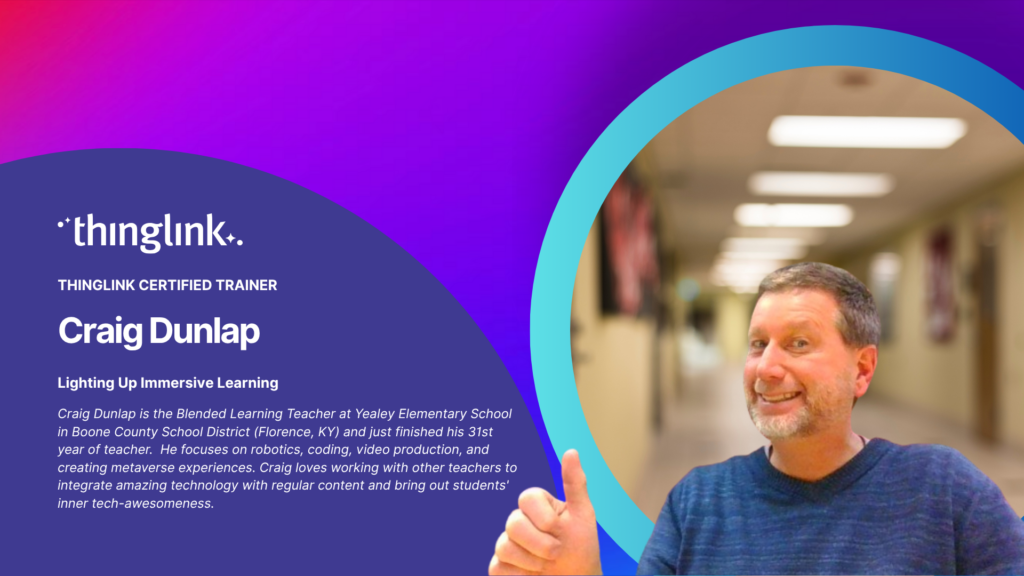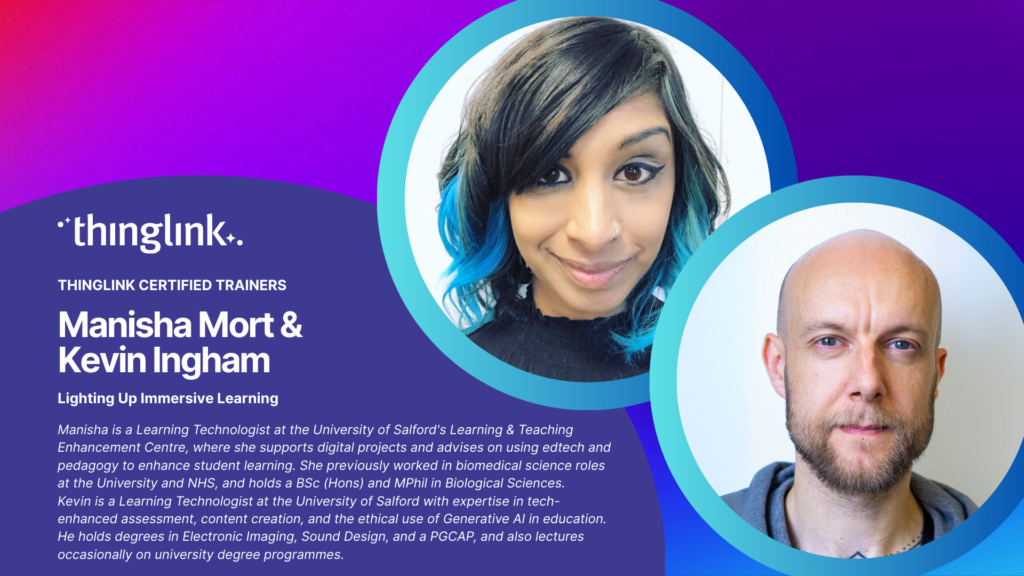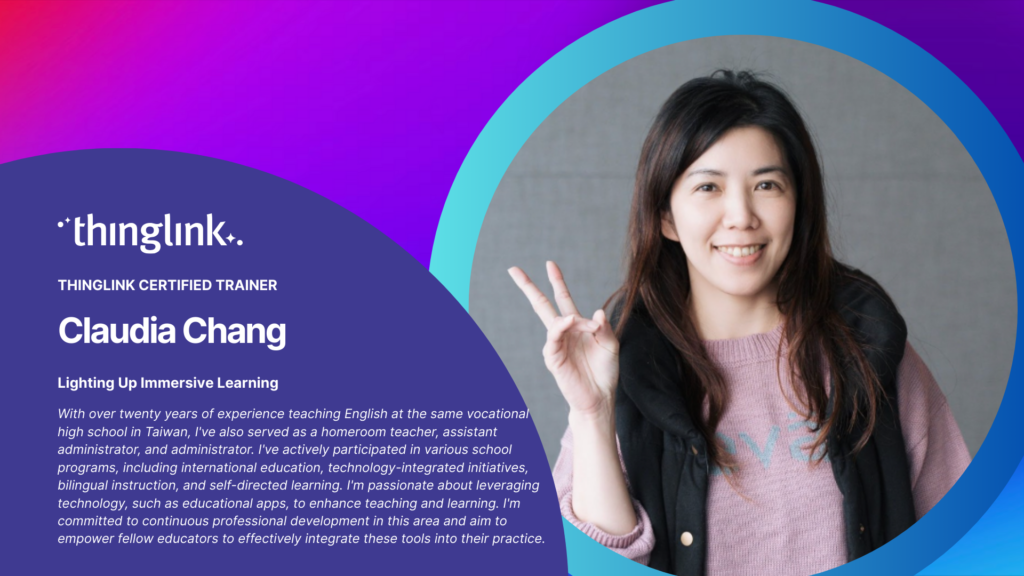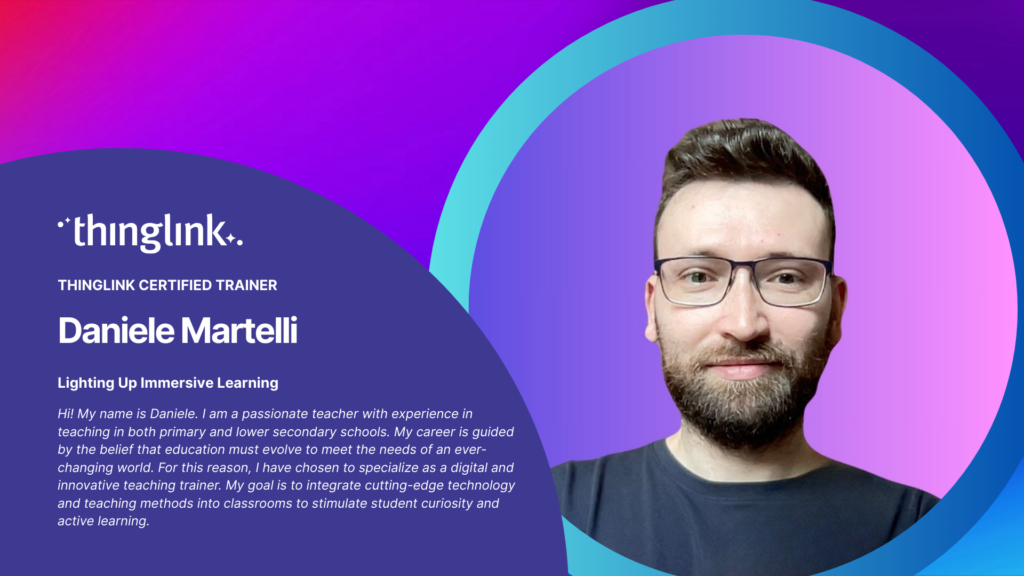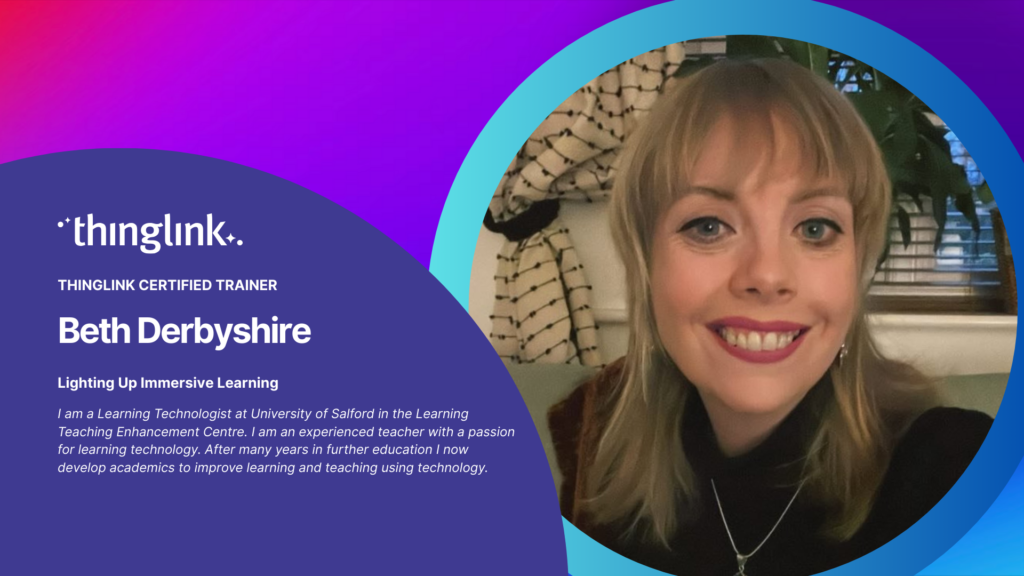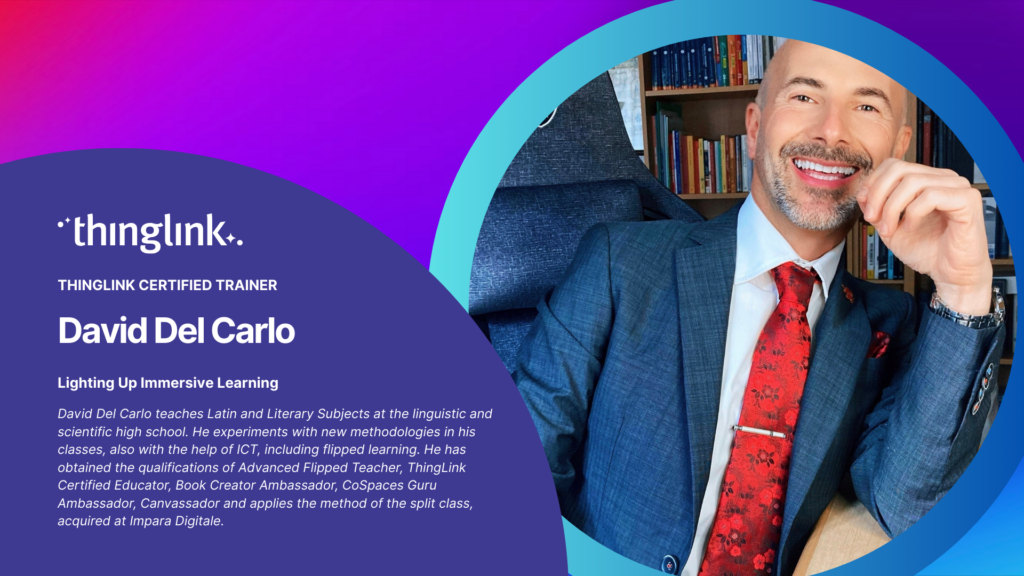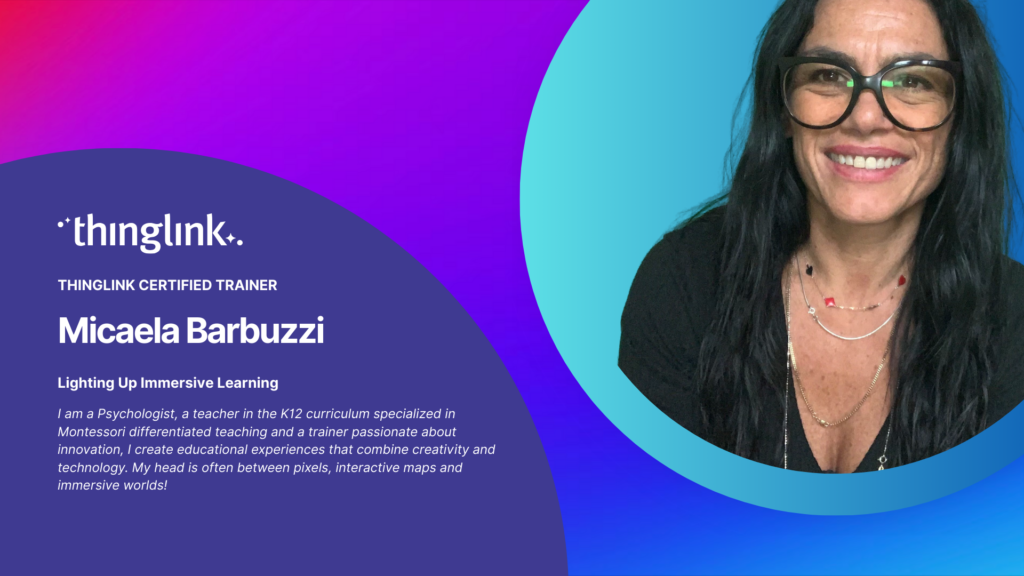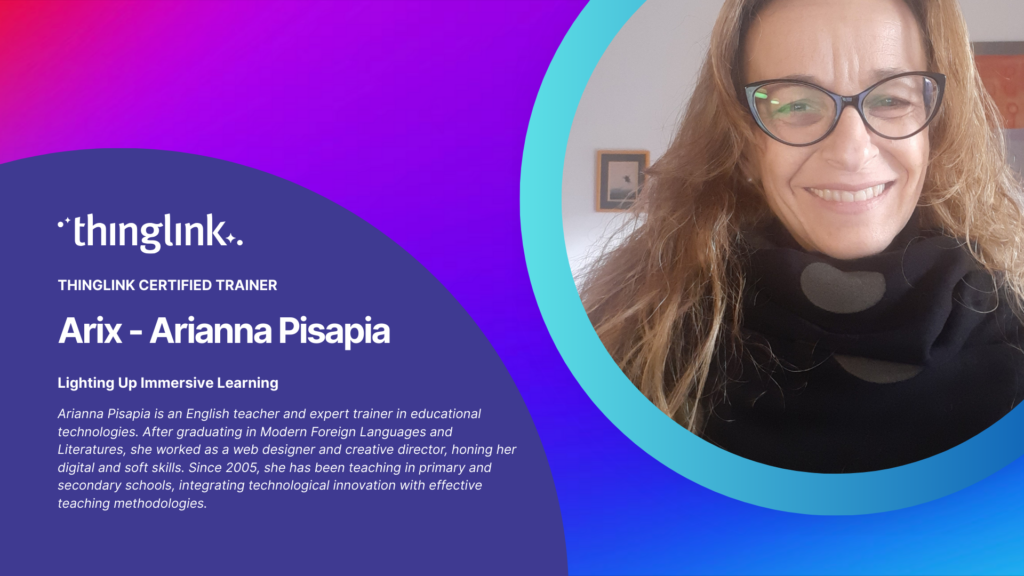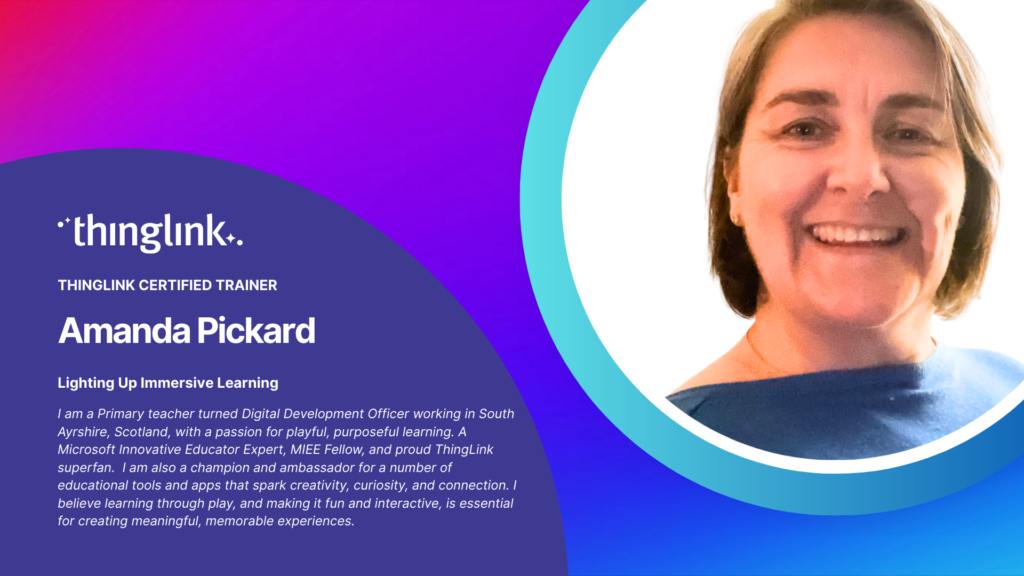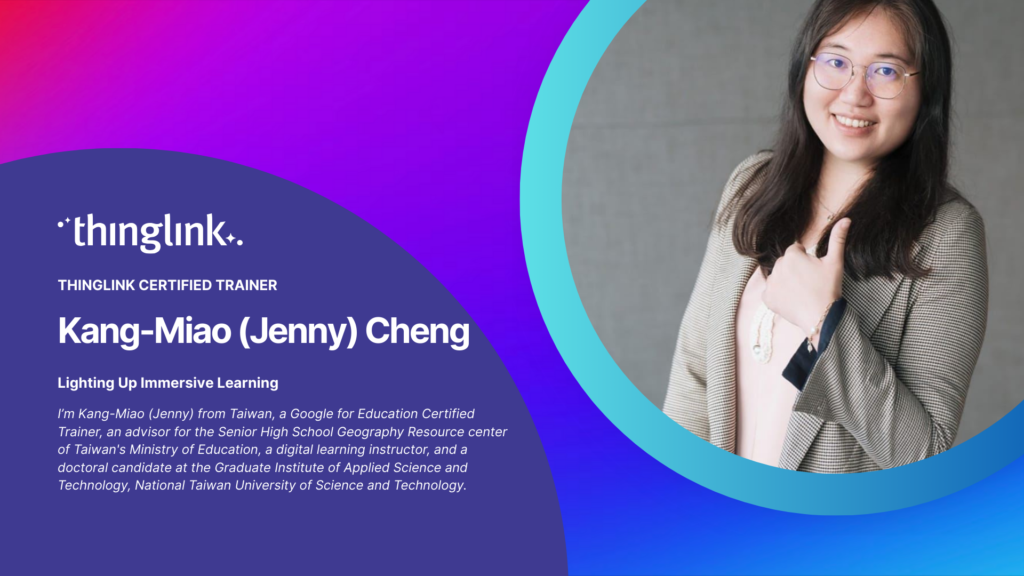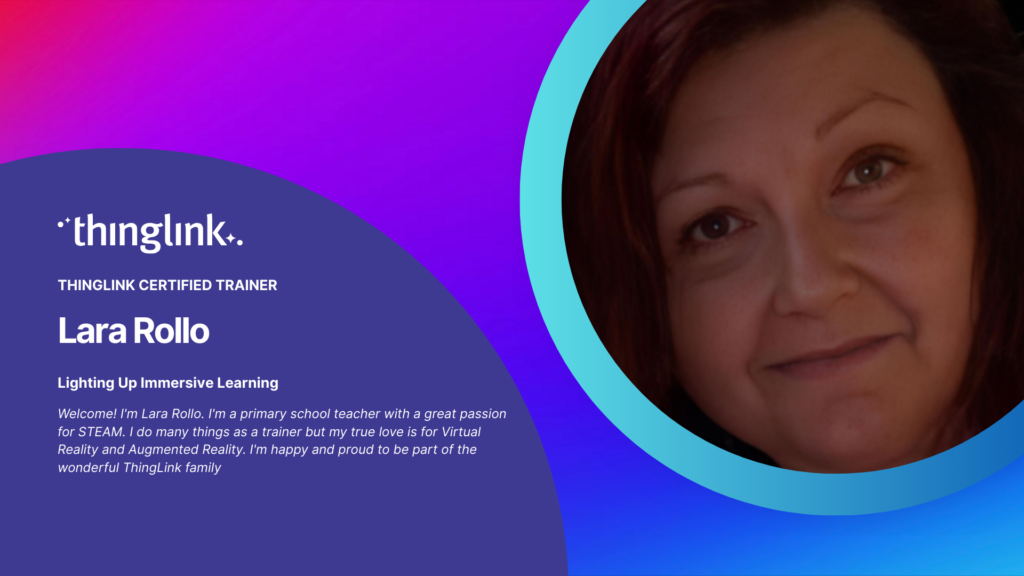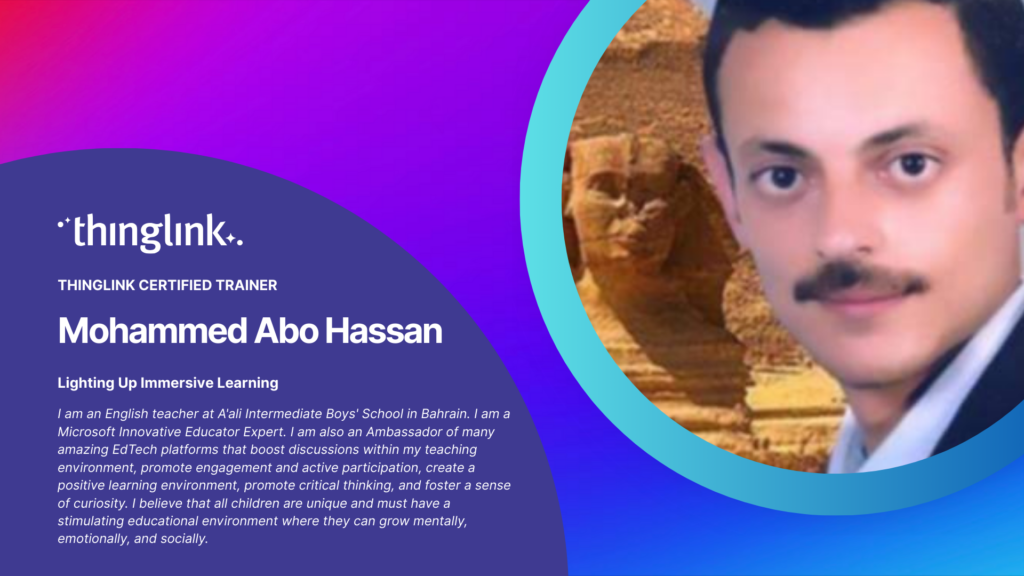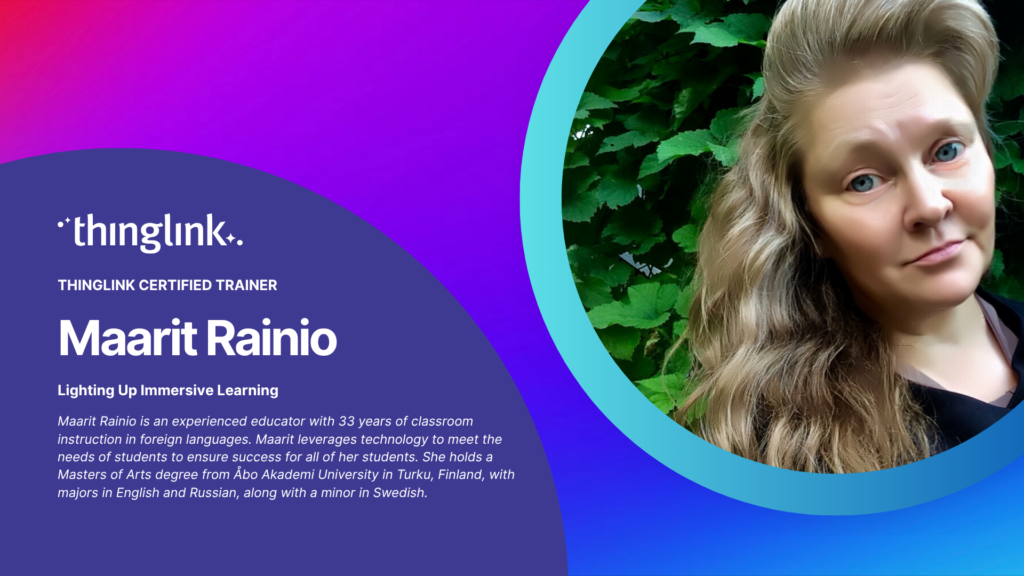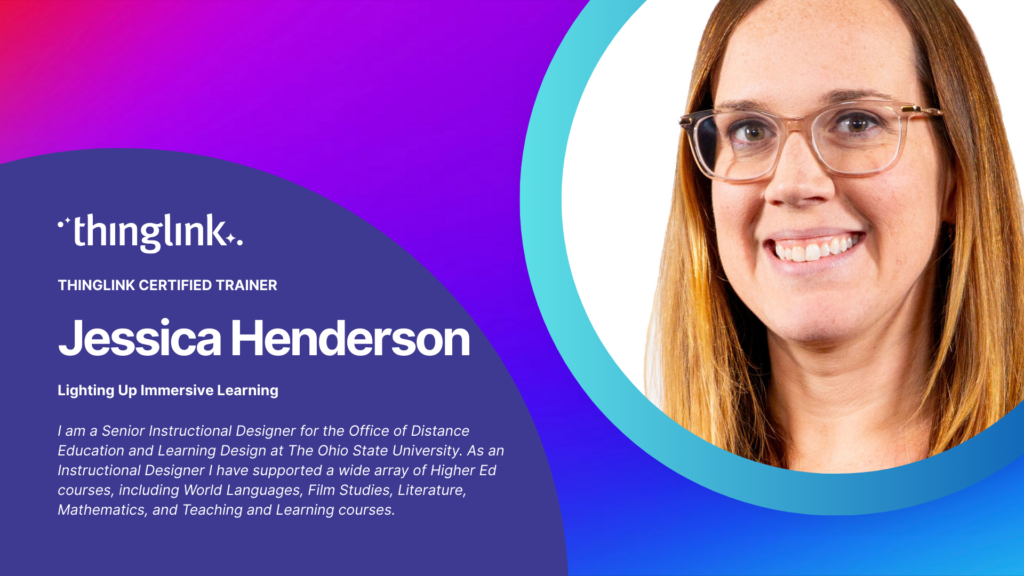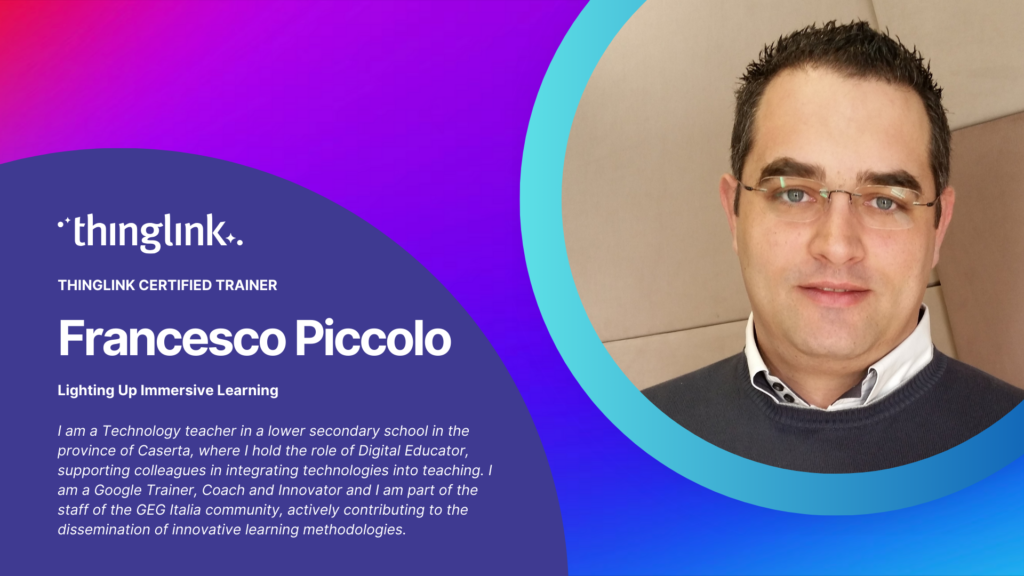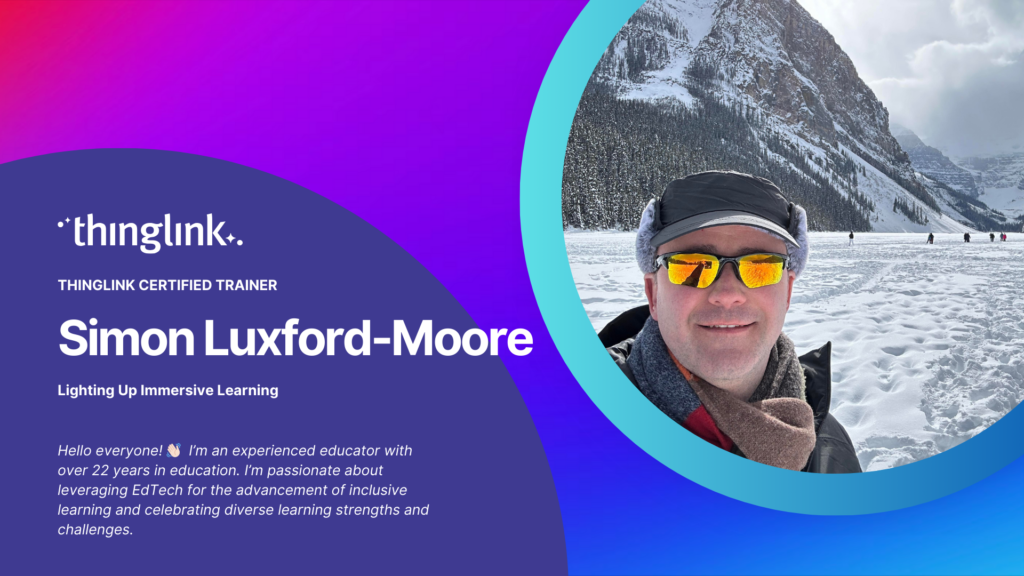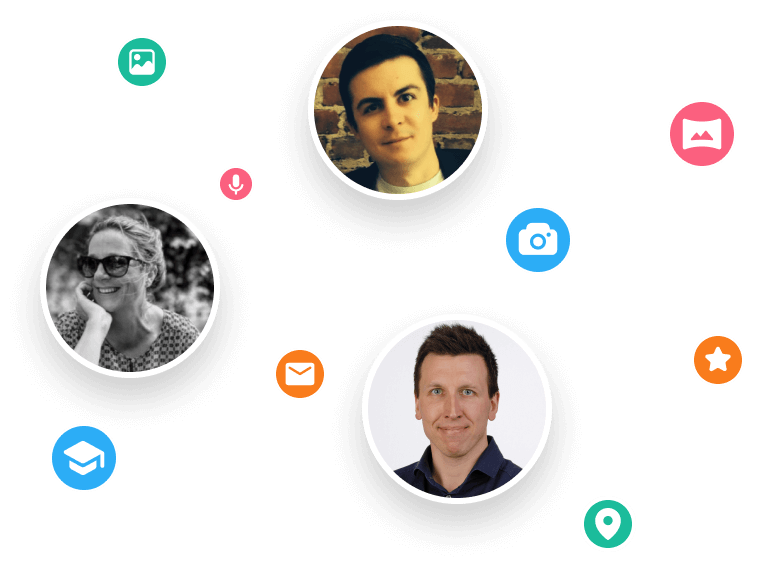
ThingLink Spotlight! Lighting Up Immersive Learning with Annamaria Bove
ThingLink Luminaries is a series of guest blog posts highlighting certified trainers who are creating interactive and immersive experiences to make learning more engaging, accessible, and meaningful. Our educators and learning designers bring a thoughtful approach to immersive learning, and their work reflects a deep commitment to creativity, pedagogy, and innovation.
In each profile post, we’ll explore their background, teaching philosophy, and favorite ThingLink projects—offering insight into how they’re making a lasting impact in their classrooms, organizations and communities! Enjoy!
Would you like to become a ThingLink Certified Trainer?
If you’d like to learn more about the benefits of being part of our global ThingLink Certified Trainer community, check our page!
Introducing Annamaria
I’m the “profgiornalista”—a high school Italian literature teacher, freelance journalist, and expert in technology-enhanced learning. For many years, I’ve been leading training activities for both teachers and students. Since 2020, I’ve been collaborating with FEM – Future Education Modena, focusing on Learning Innovation, Media Education, and Digital Journalism Education.
My journey began in 1990, after graduating, when I started working as a journalist for a local TV station and contributed to newspapers such as Il Roma and Il Giornale di Napoli. In 1995, I left active journalism to pursue teaching full-time—but I carried my passion for journalism into the classroom. For the past four years, I’ve been living in Turin, where I teach at an upper secondary school. I’ve always loved journalism, and I continue to promote it in schools through specialized training for teachers and students, as well as through school blogs and editorial teams. As a trainer (first with INDIRE, then as part of Italy’s National Digital School Plan), I design and deliver courses on media literacy, news education, and the use of digital tools in teaching. My training work always starts from real classroom experience—because it’s with my students that I test, design, and build engaging, innovative lessons.
Annamaria’s ThingLink Project
Digital Storytelling Explained: a Visual and Interactive Journey
The project aims to explain the concept of digital storytelling through a series of successive steps. By using the methodology of an interactive scenario, students and/or participants will be guided through the entire process: from defining digital storytelling to understanding the tools and technologies involved, and covering the design phase, which includes narrative elements, storytelling techniques, and the creation of digital content. This approach also includes an analysis of narrative elements, storytelling techniques, and the creation of digital content, providing a comprehensive and practical understanding of how to build a digital story.
What inspired you to create this project?
The project was inspired by my passion for journalism and the belief that digital storytelling is one of the most essential skills for the new generations. As an Italian literature teacher and journalist, I have always believed in the power of storytelling as a tool for communication, education, and creativity.
My classroom experience has made me realize how important it is to provide students not only with theoretical knowledge but also with practical tools to express themselves creatively through new technologies. Through my teaching of media education and digital journalism, I have witnessed how students’ interest in digital storytelling as a powerful and accessible means of communication has grown. I was inspired by these daily experiences to create a pathway that not only explains what digital storytelling is, but actively guides participants through the process of design and content creation. The combination of narrative elements and digital tools is key to stimulating imagination and developing cross-disciplinary skills beyond mere theoretical knowledge.
How was it experienced by your students?
The project was widely appreciated by the students, who showed strong interest in exploring digital storytelling as a tool for communication and creativity. Throughout the course, students had the opportunity to design and create digital content, developing not only technical skills related to digital tools but also critical thinking and collaboration skills. Highlights of the project include the creation of school blogs and digital editorial teams, where students applied what they learned by creating multimedia stories, which were shared and appreciated by the school community and a wider audience.
These activities had a positive impact not only on the development of digital skills but also on the improvement of students’ communication and narrative abilities, as they successfully combined creative writing and digital technologies. Furthermore, using ThingLink allowed students to interact dynamically with content and create immersive storytelling experiences, enhancing their visual and digital storytelling abilities. The outcomes of this experience were also evident in the increased engagement of students, who showed greater interest in innovative teaching and a desire to explore the world of digital journalism.
What other ideas do you have for learning with ThingLink?
Currently, I’m working on a geography project in my classes, which combines the Collaborative Learning approach and the use of virtual reality (VR). The students from two classes will work together to explore various geographical aspects and produce VR content, allowing them to immerse themselves in geographically relevant environments and explore spatial concepts interactively and engagingly. It’s a project that fosters collaboration, creativity, and the use of digital technologies, all of which ThingLink supports perfectly.
In the future, I would love to expand this experience by using ThingLink to create geographically immersive and interactive scenarios that students can explore independently or in groups, further enhancing their understanding of the world around them. One goal I hope to achieve is to integrate these types of VR content with other subjects, to create interdisciplinary learning experiences that encourage curiosity and critical thinking in students. Additionally, I would like to create collaborative projects between different schools, using ThingLink to connect students from various parts of the world, allowing them to explore global themes together through visual and interactive content. This kind of international project would be a valuable resource for promoting global learning and cross-cultural dialogue, enabling students to explore the world not just through books but in an experiential and dynamic way.
What do you love about ThingLink?
What I like most about using ThingLink is its ability to make content interactive and engaging. The platform allows you to transform simple images and videos into dynamic experiences, where students can explore, interact, and learn in an active way.
I also appreciate how ThingLink allows you to combine visual, textual, and multimedia elements in a single space, offering students the chance to develop cross-disciplinary skills such as digital storytelling, content creation, and digital resource navigation. Additionally, the visual and interactive approach stimulates their creativity and helps them reflect critically on content, applying what they learn in an innovative way. Finally, the platform’s ease of use and flexibility make it an excellent tool not only for traditional teaching but also for more creative and collaborative activities, turning learning into a stimulating and engaging experience for students.
Connect with Annamaria and fun facts!
A funny anecdote that comes to mind is from one of the first times I introduced virtual reality in the classroom. I had everything set up for the students to explore an immersive geography experience, but when I asked them to put on the VR headsets, one of the shyer students looked at me with a puzzled expression and exclaimed, “Teacher, can I really travel to another continent with this thing?”
Naturally, the whole class burst into laughter, but it was wonderful to see how that laughter broke the ice and allowed everyone to feel more open and ready to try out this new technology. It was a moment that made me reflect on how even small moments of spontaneity can enrich the learning process, and reminded me how important it is to always keep a playful dimension in even the most technical activities.
